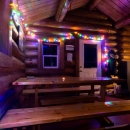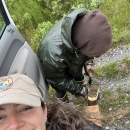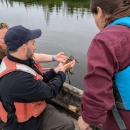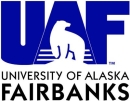As of December 2021, invasive mussels or clams have not yet been found in Alaska waters. This means that there is a unique opportunity to prevent the introduction of such invasive species invasive species
An invasive species is any plant or animal that has spread or been introduced into a new area where they are, or could, cause harm to the environment, economy, or human, animal, or plant health. Their unwelcome presence can destroy ecosystems and cost millions of dollars.
Learn more about invasive species . Contaminated recreational watercraft are a likely pathway for these invasive mussels and clams to enter the state. We worked with partners at the University of Alaska Fairbanks to assess watercraft entering the state through the road system, marine highway, and via marine barge traffic. This analysis helped identify potential placement for watercraft inspection and decontamination stations as well as opportunities for increased outreach and education for watercraft users.
Invasive species management, Recreational access










